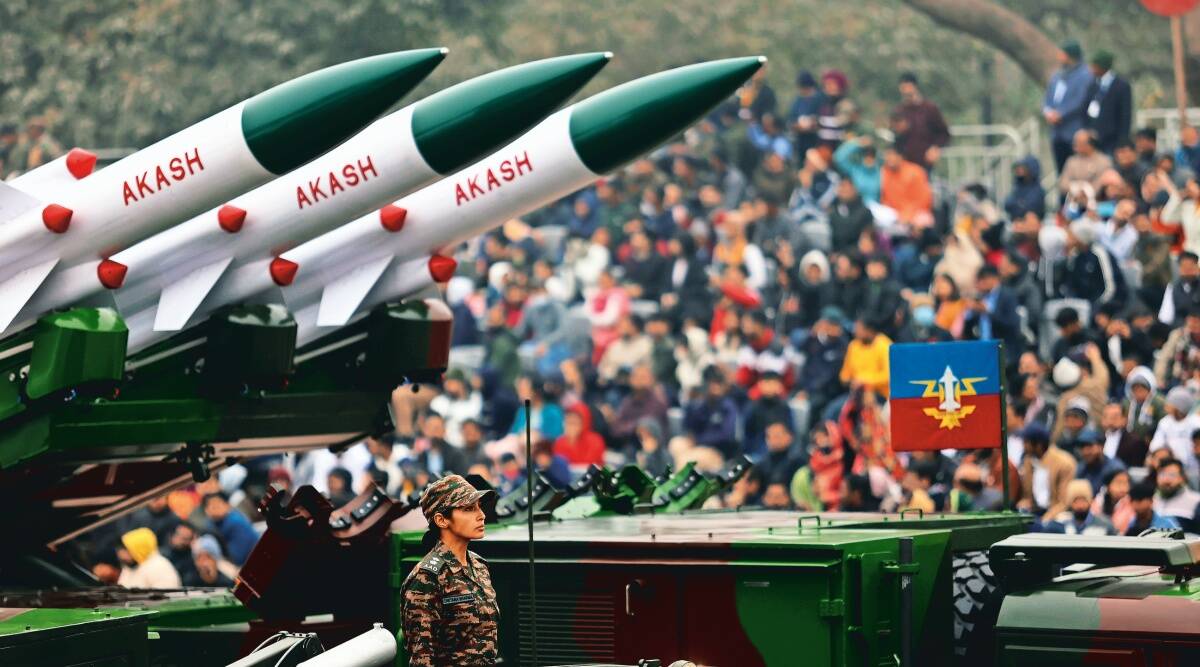Thursday’s Republic Day parade featured two themes: “Aatmarnirbharta” (self-reliance) and “Nari Shakti” (women’s power), which were highlighted by many of the marching contingents as well as the various tableaus.
To drive home the idea of self-reliance in defence, the Indian military displayed solely indigenous equipment and weapon systems. This year, the Army’s British-era 25-pounder guns, which customarily fired a symbolic 21-gun salute, were replaced by indigenous 105 mm Indian Field Guns (IFG).
Despite the fog and restricted visibility, the Indian Air Force (IAF) put on a 50-aircraft great air show for President Droupadi Murmu, Prime Minister Narendra Modi, and guests attending the parade. In addition to the Dakota aircraft, it comprised 23 fighter aircraft, 18 helicopters, and eight transport aircraft.
A combined band and marching contingent of the Egyptian Armed Forces also participated, with President Abdel Fattah El-Sisi of Egypt as the principal guest.
The Navy’s ancient IL38 SD aircraft and the modern Rafale jet both flew over Kartavya Path for the first and last time, blending the past with the present. Inducted into the IAF in October of last year, the indigenous Light Combat Helicopter Prachand was also a part of the flypast.
The mechanised column of the Army consisted of three MBT Arjun MK-I, one Nag Missile System (NAMIS), two BMP 2/2K, three Quick Reaction Fighting Vehicles (QRFV), two K-9 Vajra Self-Propelled Howitzer Guns, one Brahmos missile, two 10m Short Span Bridges, a Mobile Microwave Node and Mobile Network Centre, and two Akash missile systems.
“Power beyond bounds” was the theme of the IAF’s tableau, which featured the airborne early warning and control aircraft Netra, LCA Tejas MK II, LCH Prachand, and Airbus C-295 aircraft.
The Navy’s tableau featured a woman air crew of a Dornier aircraft (flying overhead), highlighting the all-women crew of a surveillance sortie conducted last year, the Make-in-India initiatives with a model of the new indigenous Nilgiri class ship, a Dhruv helicopter deploying marine commandos, and three models of autonomous unmanned systems being developed under the IDEX-Sprint Challenge.
Both the Navy and the Indian Air Force contingents were led by female officers, namely Lt. Cmdr. Disha Amrith and Sqn Lt. Sindhu Reddy. Lt. Chetana Sharma, an additional female Army air defence commander, commanded the Akash missile system column.
The Assam Rifles contingent consisted of an equal number of men and women. Additionally, the Central Reserve Police Force (CRPF) had an all-female contingent led by Assistant Commandant Poonam Gupta.
A female officer co-led a team of “Daredevils” motorbike riders from the Corps of Signals. The Border Security Force (BSF) camel contingent included female riders, while the Delhi Police women pipe band, comprised of 35 female constables, participated in the march for the first time.
Six men and three women comprised the Navy’s marching contingent of Agniveers.
Women also occupied prominent positions in numerous of the parade’s 23 tableaus, including those representing Kerala, Karnataka, Maharashtra, and Tripura.
The Republic Day festivities were staged on the redesigned Central Vista Boulevard, the first since Rajpath was renamed Kartavya Path last year.
